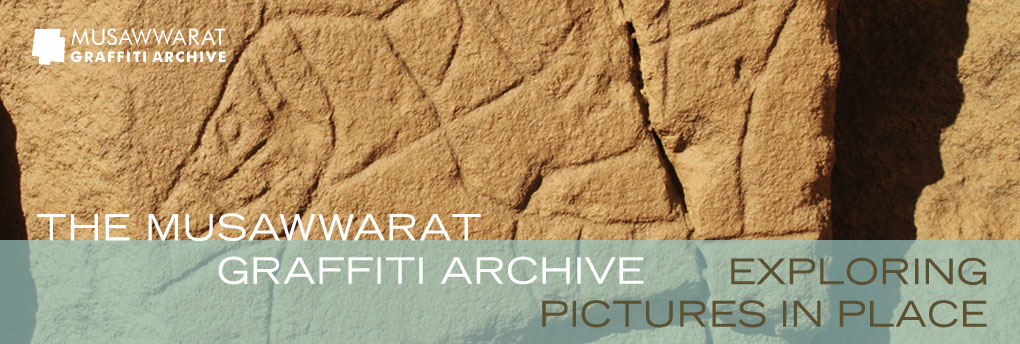The Great Enclosure
The Great Enclosure of Musawwarat es Sufra, one of the major ancient monuments of northern Sudan, is a well known but enigmatic complex of temples and other buildings, corridors, ramps and courtyards. Most of the standing parts of the labyrinth-like building complex, which covers c. 45.000 square metres, appear to have been erected from local sandstone in the third century BC, i.e. at the beginning of the so-called Meroitic period (c. 300BC-AD350) of the Kingdom of Kush. The origin of the building complex seems to date earlier, however, as is suggested by numerous building and re-building episodes that attest to the continuing significance of the monument during Kushite rule.
The Great Enclosure comprises three temples (MUS 100, 200, 300) and a number of smaller chapels as well as numerous further rooms, some of which are thought to have served as sleeping quarters, sacristies, storerooms, workshops, etc. Parts of the Great Enclosure were erected on artificial terraces to which ramps provided access. Long corridors connect some of the terraced buildings. While they were open to the sky, the corridor walls where high enough to prevent any views of those passing through. Large courtyards of irregular shape surround the terraced parts of the Great Enclosure, contributing to the unique ground plan of the building complex. Their functions are known in only few cases: in courtyard 224 the remnants of a pottery workshop were excavated and in courtyard 117 remains of an ancient garden were recovered. Judging from soil samples the plants for the garden came from nurseries along the Nile; they do not appear to have survived long.
Click here to go on a panorama tour of the Great Enclosure (courtesy of the Zamani Project).
Click here to fly through a 3D Model of the Great Enclosure (courtesy of the Zamani Project).
Click here for a walk through a 3D-model of the Great Enclosure (courtesy of the Zamani Project).
Text: Cornelia Kleinitz (2011, last update: 01/08/2014)






